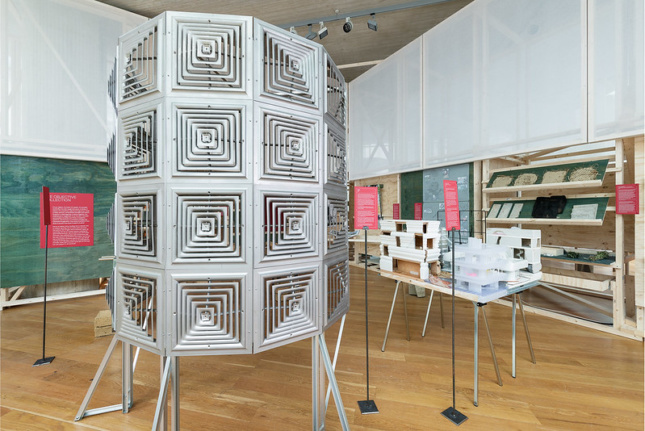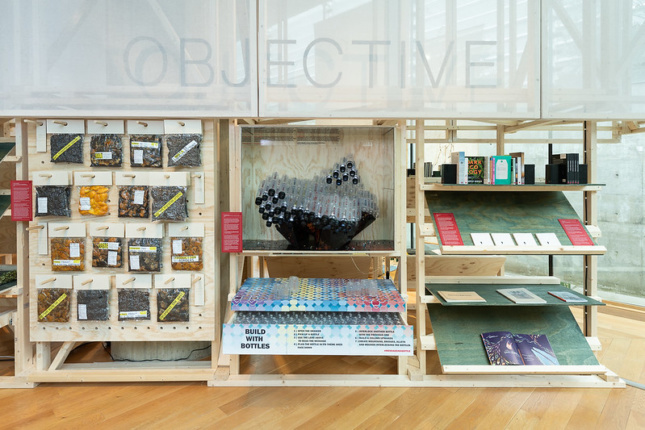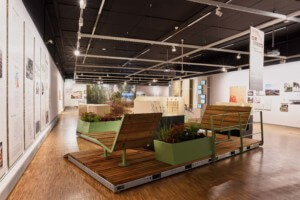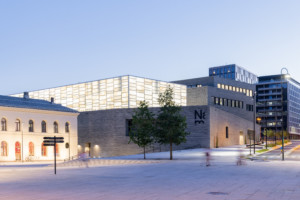The Oslo Architecture Triennale, now in its seventh iteration, has made a name for itself under the directorship of Hanna Dencik Petersson as one of the most prescient and timely showcases in the relentless stream of –iennales and –ennials, those beloved recurring art and design festivals where dreams are made. After a successful 2016 exhibition themed around migration and identity in the face of hyper-globalization, the program returned in 2019, this time examining climate change, resource allocation, and economic systems under the theme of “degrowth” with Enough: The Architecture of Degrowth. Curated by Interrobang, an architecture and engineering firm, with chief curators Matthew Dalziel, Phineas Harper, Cecilie Sachs Olsen, and Maria Smith, the exhibition is a fresh take on ecology, introducing the ideology of degrowth into architecture discourse and examining how it would help realize a more ecologically-oriented human civilization.
Degrowth has recently gotten attention as a new paradigm for understanding a post-consumerist future where resource extraction and economic growth are decelerated, giving way to new social, political, and economic systems that are more harmonious with nature and the earth’s finite resources and terrain. For an exhibition, this is fertile intellectual territory to speculate on the ways in which we build, and how they can evolve in alternative worlds. It is a refreshingly positive take on politics today, as much of our discourse, in architecture and beyond, is overwhelmingly negative and aims to discount or problematize (cancel) rather than propose new ideas or provoke new thoughts.

The main festival exhibition, titled The Library, was conceptualized as “a spatial infrastructure for sharing knowledge” and was organized as a series of four rooms or “collections” that featured works ranging from material samples and books to analyses of languages and economic systems. The range and breadth of types of thought experiments presented a holistic and clear vision—almost a manifesto—of what degrowth might look like as an architectural philosophy. It was not a set of solutions, but rather speculative, positive provocations on what this new area of discourse might look like.
In the Library‘s first collection, “The Subjective,” personal identities and rituals were examined. How would life change in a degrowth world? How would we live, laugh, and love? The Aerocene backpack by the Aerocene Community is a personal, solar-powered balloon imagined as an alternative to carbon-intensive jet air travel. Helen Stratford’s Organizational Diagrams for Everyday Life is a set of schematic diagrams that redraw the rituals of a daily schedule to visualize new routines outside of the pressures of work and productivity metrics that define us today.
Perhaps the most traditionally eco-friendly collection is the “Objective Collection,” which is about materials and building techniques. Like the rest of the Triennale, it attempts to take these decades-old sustainability ideas and pushes them into new places. Another Column by YYYY-MM-DD is a deployable textile column that can be filled with sand or aggregate to create a site-specific architecture to replace concrete. Multiplo by GUSTO is a simple brise-soleil made of discarded fan covers from an abandoned army base in Northern Italy. A host of other new, eco-friendly materials gave a glimpse into how resource extraction, especially fossil fuels, could be replaced by smaller-scale reuse and bio-engineering to architectural “degrowth.”

In the Collective and Systemic collections lie the big questions that both define a possible “Architecture of degrowth,” and are also impossible to answer now. How new collectivities and systems would be constructed is not clear in degrowth discourse at the moment, but the ideology is ripe for speculating on how we might live in a post-consumerist, post-growth society. Collective projects include Visual Ecolophonic by INDA and Animali Domestici examines and visualizes the Sami language of Northern Finland, which they describe as more in harmony than nature than most languages. ARPA by (ab)Normal is a theoretical world where artificial intelligence replaces market forces as an organizing principle. It is an important aspect to consider here, as questions about power structures and humanity’s proclivity toward violence have to be taken into consideration.
The biggest questions are raised in the Systemic Collection, where entire social and political systems, networks, and environments are rethought at both the local and the global scale. This, according to the curators, is where degrowth departs from previous environmental movements. MassBespoke, a project to build quality housing out of timber, another replacement for concrete, was also on show at the Triennale. By allowing that flexibility in the system, these homes can now be personalized like custom homes. The Intentional Estates Agency (Jesse LeCavalier, Tei Carpenter, Dan Taeyuong, and Chris Woebken) is a set of real and imagined real estate models both new and old—from 19th-century utopias to seasteading—that speculate on alternatives to our current real estate metrics.
In addition to the main exhibition, more than 100 events and other programming added to the degrowth chorus. Standouts included a workshop to make tote bags from recycled tote bags from previous events, as well as a spectacular, interactive performance by Rimini Protokoll that made the audience unwilling participants in the complexities and absurdities of our growth-fueled construction industry; politicians engaging in corruption, lawyers battling, financiers gambling, and precarious workers struggling.
Perhaps what is the most interesting aspect of this festival are the questions about that come next. How is degrowth a helpful ideology for architecture? Can it provoke new ways of building at the individual level that can become communal and then translate into change at the systemic scale? What power structures are most susceptible to degrowth in architecture? How can the development and real estate industry be convinced to participate in this? How do democracy and degrowth interact? What would happen if the right were to take degrowth and use it as an excuse to enable eco-fascism? Conversely, what does a green, socialist utopia look like? Can every aspect of our lives be redesigned through the lens of degrowth? The answers don’t matter right now, it is the questions being raised that offer promise, and should echo through architecture at this most critical and important time for these eco-ideas.











